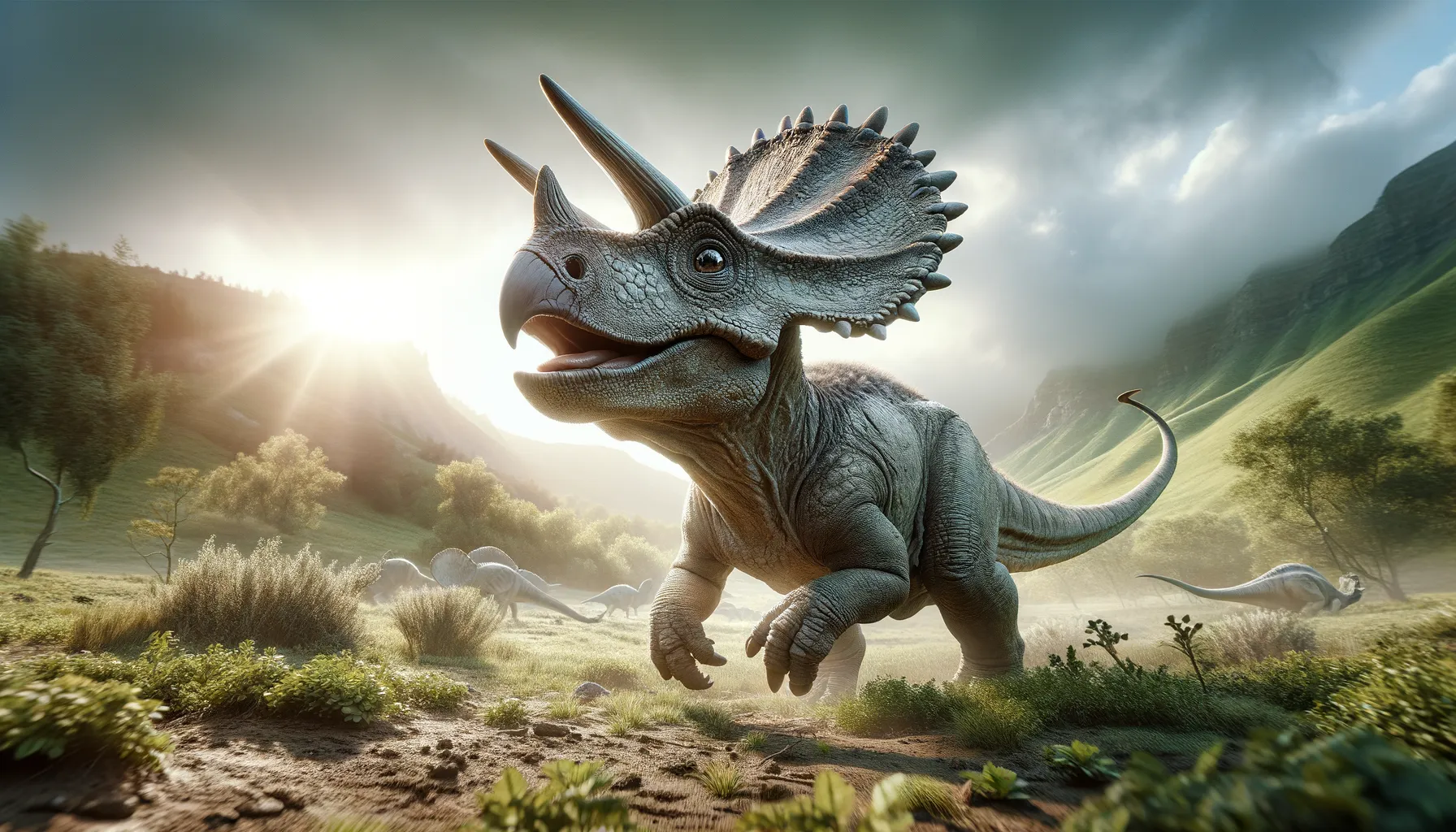
Unescoceratops
A little dinosaur with a large legacy.
Period
Cretaceous
Length
Roughly 2 meters in length.
Height
Approximately 1.2 meters tall.
Weight
Around 200 kilograms.
Unescoceratops was a small, plant-eating dinosaur that roamed the Earth during the Late Cretaceous period. This member of the ceratopsian family was known for its distinctively narrow jaw and teeth adapted for chewing tough vegetation. Although it lacked the impressive horns and frills of its larger relatives, its unique features help paleontologists understand the diversity and evolution of horned dinosaurs.
Diet
Unescoceratops primarily fed on ferns, cycads, and other low-lying vegetation. The structure of its teeth suggests it could efficiently process tough, fibrous plants, which comprised the bulk of its diet.
Hunting
As a herbivore, Unescoceratops did not engage in hunting. Instead, it likely foraged for plant materials, relying on its keen sense of smell to locate suitable food sources.
Environmental challenges
Unescoceratops faced various environmental challenges, including fluctuations in climate and changes in available plant life. Predation from larger carnivorous dinosaurs was also a constant threat. Adaptations such as a compact body structure and nimble movements likely aided its survival in such a dynamic environment. The dense forest habitats it dwelled in provided both food and shelter from predators, though competition for resources could have been fierce.
Speed
Likely slow due to its small size and short legs.
Lifespan
Estimated to be around 10 to 20 years.
First discovery
Discovered in Alberta, Canada, in 2012.
Fun Facts
- Unescoceratops was a small, horned dinosaur that lived during the Late Cretaceous period.
- This dinosaur was named in honor of UNESCO, which promotes science and education worldwide.
- Unescoceratops was about the size of a medium-sized dog, making it quite small compared to other dinosaurs.
- It was discovered in Canada, with its fossils first found in the Dinosaur Provincial Park of Alberta.
- Unlike its well-known relative Triceratops, Unescoceratops did not have large horns.
- This dino likely lived in forested areas and used its beak-like mouth to munch on plants.
- Unescoceratops was identified from only a partial jawbone and other small skeletal fragments.
Growth and Development
Unescoceratops likely grew rapidly to reach sexual maturity quickly to better survive in its predator-rich environment. Juvenile dinosaurs may have relied on camouflage and staying within the herd for protection. As it matured, it developed stronger limbs and a more robust structure to support its herbivorous lifestyle. Transitioning from juvenile to adult stages likely involved significant changes in diet, as plant chewing capabilities expanded.
Habitat
This dinosaur lived in the lush, forested environments of what is now North America. It thrived in areas with abundant plant life, such as ferns and cycads, which were integral to its diet. The landscape included a variety of terrains, from open plains to densely forested regions, supporting a variety of life forms. The changing diet throughout the seasons showed the adaptability of Unescoceratops to its habitat.
Interaction with other species
Unescoceratops likely coexisted with other small to medium-sized herbivores, each occupying different ecological niches to reduce competition. Its main interactions, apart from feeding, were likely related to avoiding predators. Herd behavior could have been a strategy to achieve mutual protection from carnivorous dinosaurs. Social structures within ceratopsian species like Unescoceratops might have included complex interactions for mating and social cohesion.
Natural lifespan
Unescoceratops had an estimated lifespan of up to two decades.
Reproduction
Unescoceratops likely laid eggs in small clutches, as is typical with many dinosaurs. Female dinosaurs might have chosen nesting sites carefully to provide optimal protection and warmth. Incubation involved guarding nests against predators, and hatchlings needed parental care during early development stages. The offspring might have remained with parental groups until they could fend for themselves, thus ensuring higher survival rates.
Social behaviour
Unescoceratops possibly participated in herding behavior, which could offer protection against predators. This dinosaur may have used a series of vocalizations or physical cues for communication within social groups. The social structure might have included hierarchies, possibly led by dominant individuals. Such arrangements would serve purposes in mating, foraging, and group defense.
Fossil locations
Fossils of Unescoceratops have been found in Canada, particularly in the Dinosaur Park Formation. These discoveries provide insights into the diverse ceratopsian fauna of the Late Cretaceous period. The preserved remains offer crucial details about its morphology and help paleontologists piece together its evolutionary history. This limited fossil record is instrumental in studying dinosaur diversity in prehistoric ecosystems.
